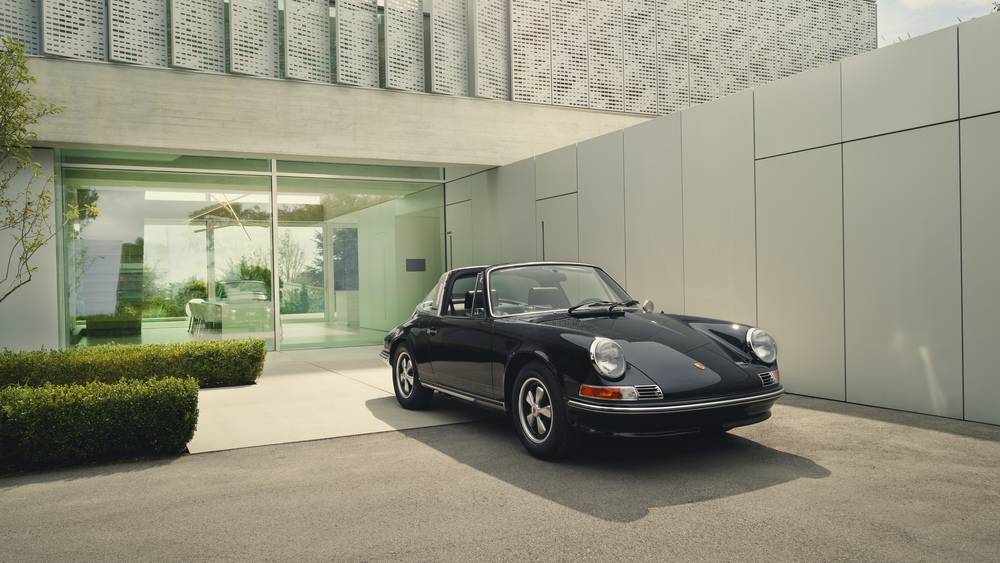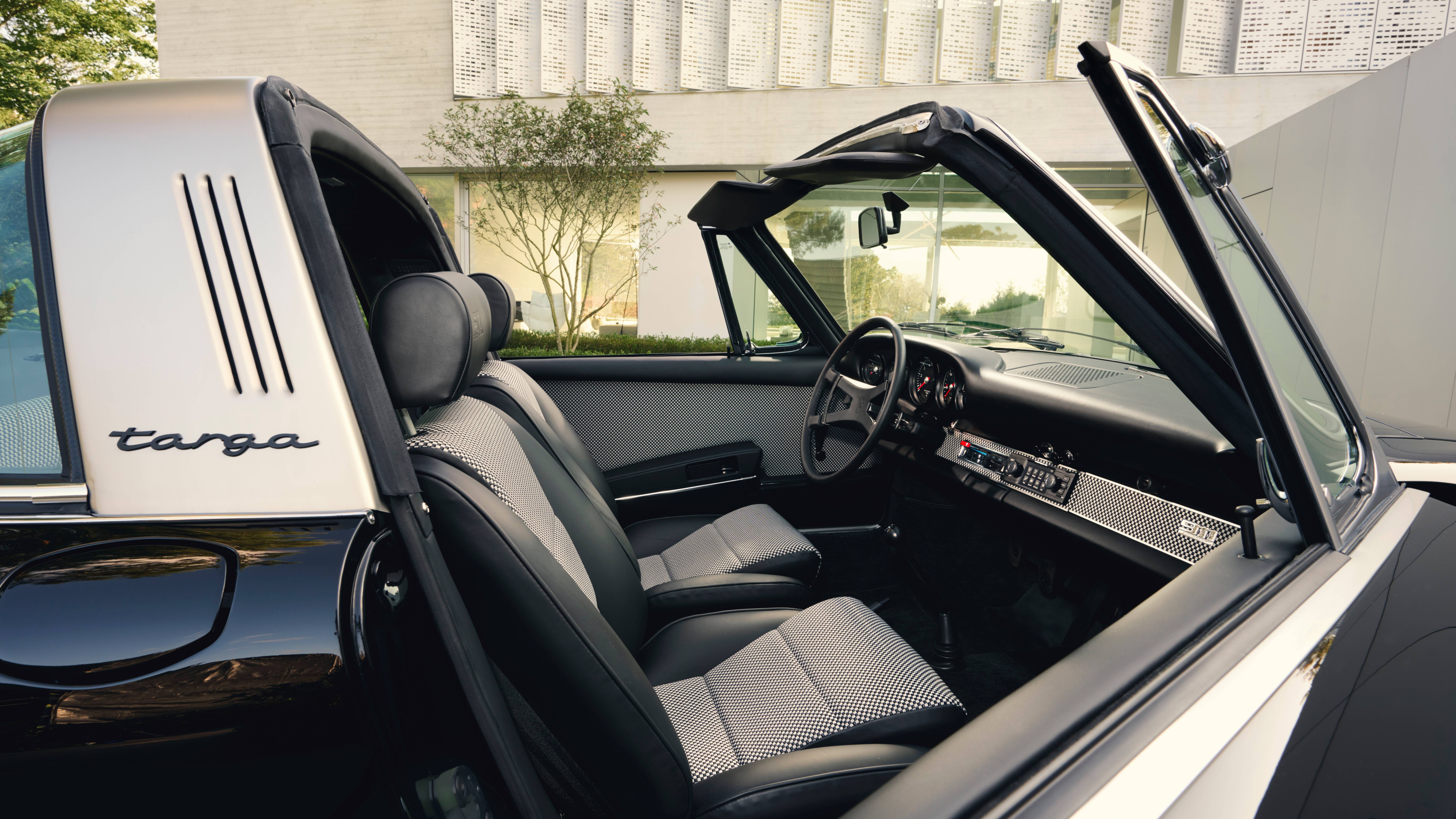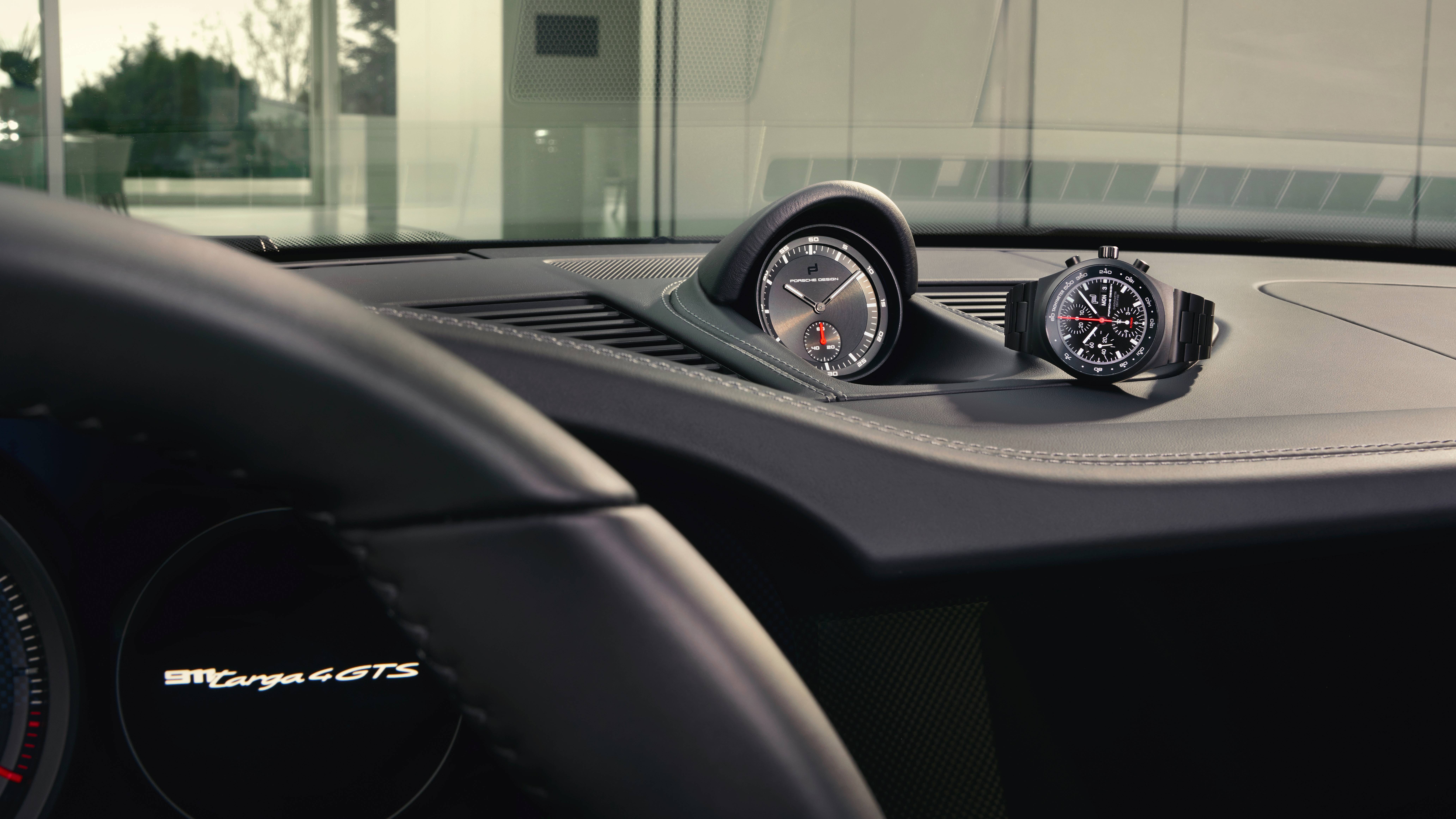

Professor Ferdinand Alexander Porsche was the eldest son of Ferry Porsche and grandson of Porsche founder Ferdinand Porsche. FAP, who died in 2012, joined the business that bore the family name in 1958, and the design of the original 911 is largely attributed to him. In 1972, he left to set up Porsche Design, an independent company that not only handled Porsche’s burgeoning merchandise demands (starting off with a bespoke watch for ‘long-standing employees’), but also ventured into collaborations with other, non-automotive, brands.
Fifty years later, and Porsche Design is still going strong. Current partners include the likes of Philips, Acer, and Huawei, and PD also puts out its own discrete, high-designed versions of enduring consumer products, from soundbars to earbuds, eyewear, watches, menswear, pens, and, for some reason, an inordinate number of cigarette lighters.

To celebrate this anniversary, the parent company has created a special edition of the 911 Targa 4 GTS. The Targa is one of the stars of the current 911 range, with its clever roof mechanism that is the closest a real car can come to a Michael Bay-style Transformer.
The new edition has an unwieldy name – the 911 Edition 50 Years Porsche Design – but this is, after all, a company that sells a model called the Taycan GTS Sport Turismo (or, in other words, the Porsche Taycan Gran Turismo Sport Sport Turismo). Naming might not be Porsche’s strong suit, but the new edition demonstrates that it still has practically everything else going for it.
The 911 is now in its eighth generation. If it wasn’t for the combination of dynamic specialists and drivetrain technology, the model wouldn’t have survived for so long. In fact, a modern 911 is a pretty miraculous machine when you consider how flawed the fundamental package is; a rear-engined, four-seater sports car. Over the decades, this tail-heavy design has been honed and refined to create what is now considered the gold standard of sports cars. In its most basic form, a 911 is perfectly balanced, delightfully responsive, meticulously detailed, inside and out, and extremely easy to live with. In its most extreme iteration, the 911 GT3, it is a veritable supercar.

The Edition 50 Years Porsche Design ramps up the obsessive attention to detail. The black bodywork references the very first Porsche Design product, the all-black Chronograph 1, juxtaposed with Satin Platinum wheels and ‘Targa’ bar. There are subtle logos, including F.A. Porsche's signature on the centre console, and Porsche Design on the headrests, plus a few of the company’s long list of optional extras thrown in as standard. The most significant of these is the Sport Chrono package, a dash-mounted chronograph and steering wheel mode switch for flicking through the 911’s various drive modes (Normal, Sport, Sport Plus, Individual and Wet).
The company’s Porsche Classic division has also re-built a 1972 911 S 2.4 Targa to mirror the modern car. Shown here, this complete restoration of an original car is finished in the same colour spec as the new edition, with the same badging.
Sign up to the T3 newsletter for smarter living straight to your inbox
Get all the latest news, reviews, deals and buying guides on gorgeous tech, home and active products from the T3 experts

The Targa model has an intriguing backstory. The first version was released in 1967, ostensibly an open-topped car with a very visible steel roll bar in place of ‘B’ pillars, with the earliest cars having a removable plastic rear window. The reason for the design was a rumoured change in American car safety legislation that would effectively prohibit the sale of conventional convertibles. Several manufacturers came up with semi-open sports cars in response (like the classic ‘T-Top’ Chevrolet Corvette), but the rules were never introduced. ‘Targa’ – named for the Targa Florio race in Sicily – became a generic term for this kind of open-topped sports car, but the name is owned by Porsche.

It would be another 15 years before a ‘true’ 911 Cabriolet was released (creating yet another packaging headache for the engineers) but the Targa style endures. Ironically, the modern Targa is even more complex than a convertible, eschewing a straightforward soft-top in favour of a mechanism that elevates the rear window up and away from the car to reveal the central roof panel, which is then lifted into place. Twin hatches on the roll bar pop open to receive the struts as they swing into place, closing neatly behind them. It’s a mechanical ballet, smooth, swift, and precise.
Porsche will be building 750 examples of this 50th anniversary issue Targa, each of which comes with a limited edition ‘Chronograph 1–911 50 Years of Porsche Design’ (again with these names). The new watch has a face inspired by the design of the car’s speedometer and is made in Porsche Design’s own watchmaking factory in Switzerland.

Finally, the Porsche Museum in Stuttgart – a dramatic slice of spiky contemporary architecture by the Austrian firm Delugan Meissl – is currently holding an exhibition of Porsche Design’s best work, and the life and work of Ferdinand Alexander. The show includes F.A.Porsche’s own 993 Speedster, a custom factory edition of two (the other was made for Jerry Seinfeld), the 904 Carrera GTS and the pair of cars you see here. Porsche Design has always acted as a filter, ensuring the factory is represented by products and specifications of impeccably good taste. "Even if the customer is king, you shouldn't go further than your own understanding of your own brand image," F.A. Porsche told me when I interviewed him way back in 2000, "Stay honest."
911 Edition 50Y Porsche Design starts at £144,360.00.
Read more at www.porsche.com/Museum and www.porsche-design.com/de/en/50y.
This article is part of The T3 Edit, a collaboration between T3 and Wallpaper* which explores the very best blends of design, craft, and technology. Wallpaper* magazine is the world’s leading authority on contemporary design and The T3 Edit is your essential guide to what’s new and what’s next.

Jonathan Bell is Wallpaper* magazine’s Transport and Technology Editor, a role that encompasses everything from product design to automobiles, architecture, superyachts, and gadgets. He has also written a number of books, including Concept Car Design, 21st Century House, and The New Modern House. His interests include art, music, and all forms of ephemera. He lives in South London with his family.


